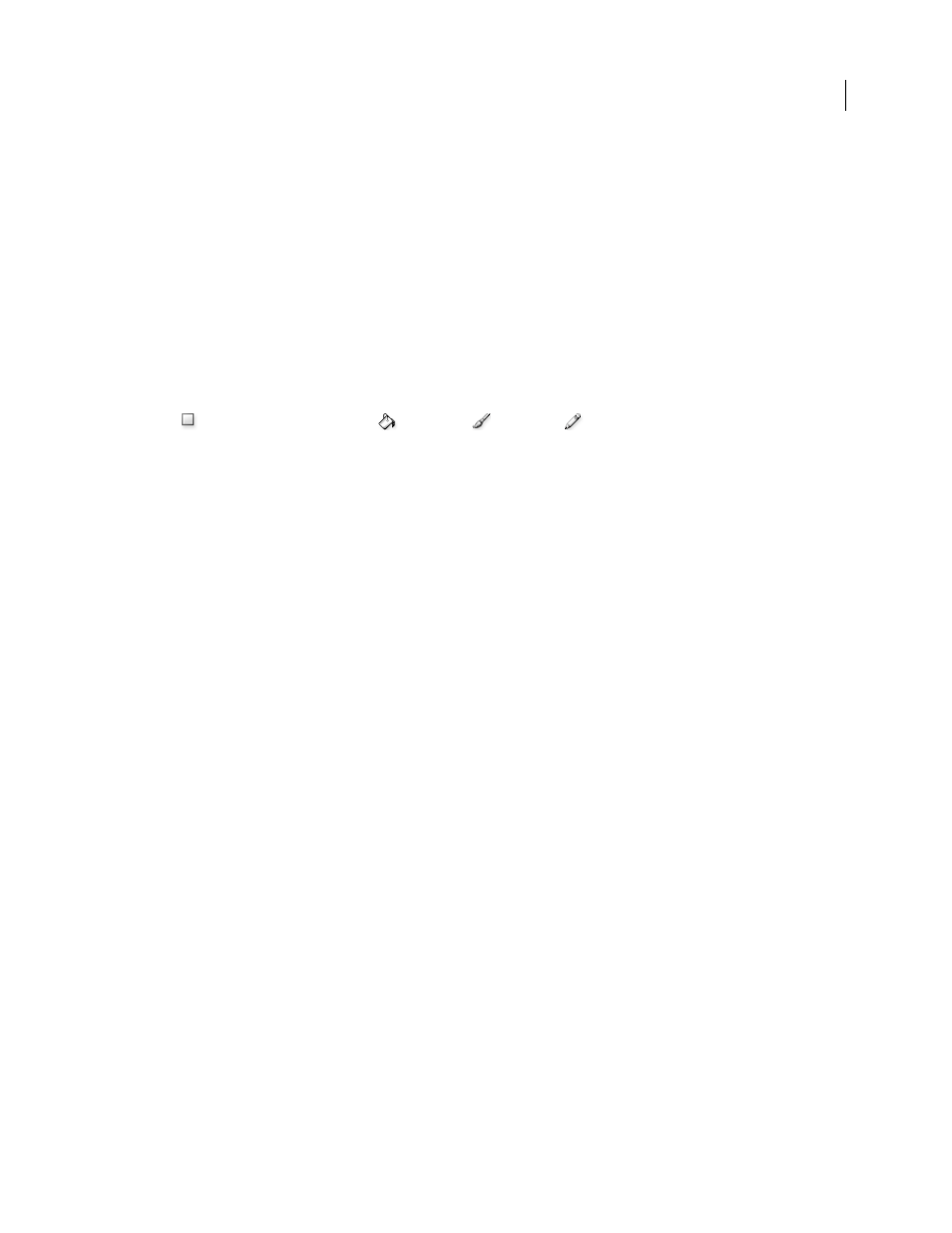List of blending modes, Ee “list – Adobe Photoshop CS3 User Manual
Page 351

PHOTOSHOP CS3
User Guide
344
List of blending modes
Choose from the Mode pop-up menu in the options bar.
Note: Only the Normal, Dissolve, Darken, Multiply, Lighten, Linear Dodge (Add), Difference, Hue, Saturation, Color,
Luminosity, Lighter Color, and Darker Color blending modes are available for 32-bit images.
Normal
Edits or paints each pixel to make it the result color. This is the default mode. (Normal mode is called
Threshold when you’re working with a bitmapped or indexed-color image.)
Dissolve
Edits or paints each pixel to make it the result color. However, the result color is a random replacement of
the pixels with the base color or the blend color, depending on the opacity at any pixel location.
Behind
Edits or paints only on the transparent part of a layer. This mode works only in layers with Lock Trans-
parency deselected and is analogous to painting on the back of transparent areas on a sheet of acetate.
Clear
Edits or paints each pixel and makes it transparent. This mode is available for the Shape tools (when fill
region
is selected), Paint Bucket tool
, Brush tool
, Pencil tool
, Fill command, and Stroke command.
You must be in a layer with Lock Transparency deselected to use this mode.
Darken
Looks at the color information in each channel and selects the base or blend color—whichever is darker—
as the result color. Pixels lighter than the blend color are replaced, and pixels darker than the blend color do not
change.
Multiply
Looks at the color information in each channel and multiplies the base color by the blend color. The result
color is always a darker color. Multiplying any color with black produces black. Multiplying any color with white
leaves the color unchanged. When you’re painting with a color other than black or white, successive strokes with a
painting tool produce progressively darker colors. The effect is similar to drawing on the image with multiple
marking pens.
Color Burn
Looks at the color information in each channel and darkens the base color to reflect the blend color by
increasing the contrast. Blending with white produces no change.
Linear Burn
Looks at the color information in each channel and darkens the base color to reflect the blend color by
decreasing the brightness. Blending with white produces no change.
Lighten
Looks at the color information in each channel and selects the base or blend color—whichever is lighter—
as the result color. Pixels darker than the blend color are replaced, and pixels lighter than the blend color do not
change.
Screen
Looks at each channel’s color information and multiplies the inverse of the blend and base colors. The result
color is always a lighter color. Screening with black leaves the color unchanged. Screening with white produces white.
The effect is similar to projecting multiple photographic slides on top of each other.
Color Dodge
Looks at the color information in each channel and brightens the base color to reflect the blend color
by decreasing the contrast. Blending with black produces no change.
Linear Dodge (Add)
Looks at the color information in each channel and brightens the base color to reflect the blend
color by increasing the brightness. Blending with black produces no change.
Overlay
Multiplies or screens the colors, depending on the base color. Patterns or colors overlay the existing pixels
while preserving the highlights and shadows of the base color. The base color is not replaced, but mixed with the
blend color to reflect the lightness or darkness of the original color.
Soft Light
Darkens or lightens the colors, depending on the blend color. The effect is similar to shining a diffused
spotlight on the image. If the blend color (light source) is lighter than 50% gray, the image is lightened as if it were
dodged. If the blend color is darker than 50% gray, the image is darkened as if it were burned in. Painting with pure
black or white produces a distinctly darker or lighter area, but does not result in pure black or white.
